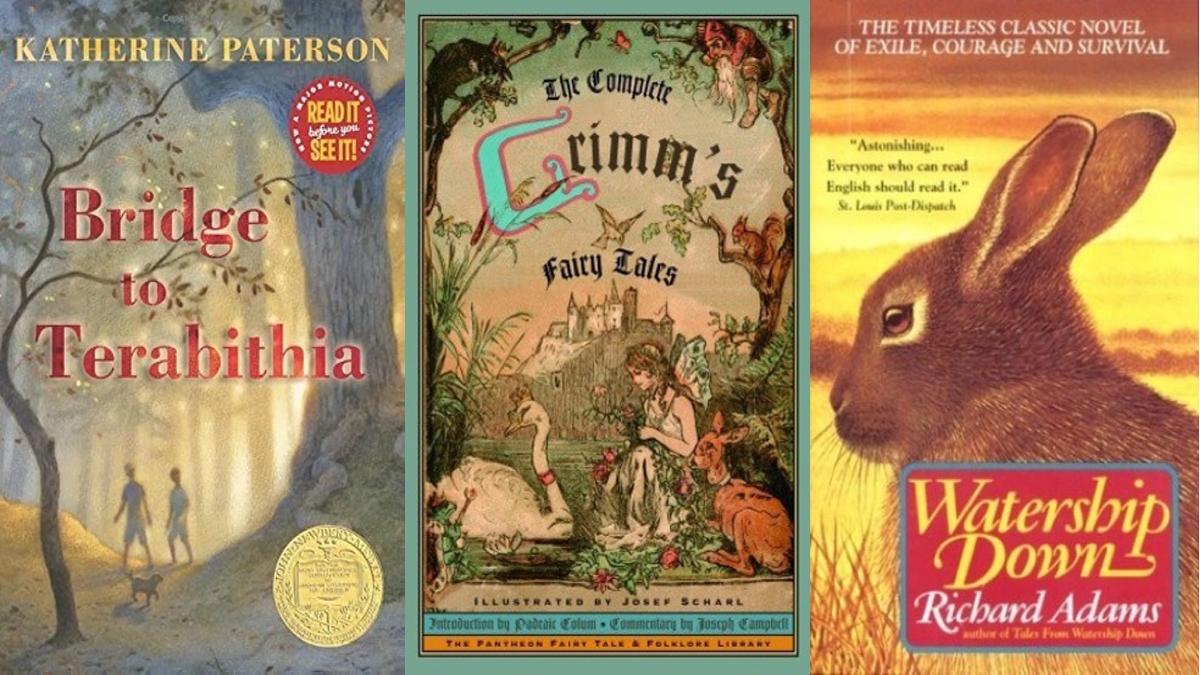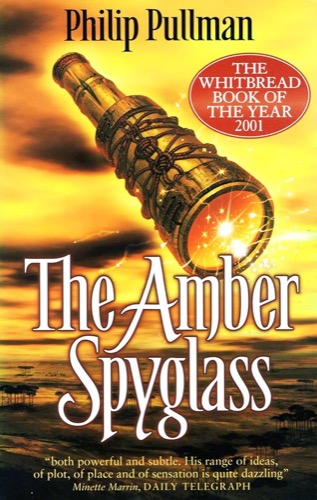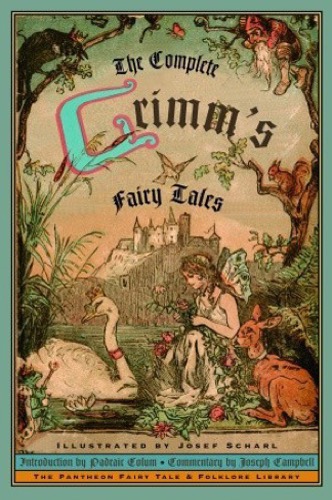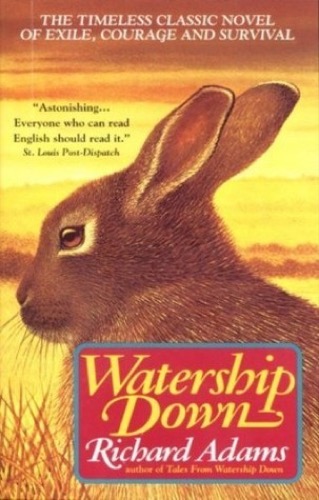
Childhood trauma. Is it a character builder? A psychic wound? A personality quirk-maker? While no one (except maybe your therapist) can fully answer these questions, I do know this: I wouldn’t be the person I am today without the horrifying books I read as a child. While modern day children’s fantasy tends to pull its punches, the authors of yesteryear were fully prepared to dropkick children right in their little hearts. These are the 10 most traumatizing children’s fantasy books of all time, written by people who need therapy, for people who need therapy.
The Edge Chronicles

The setting of Paul Stewart and Chris Riddell’s The Edge Chronicles is stressful enough. The series takes place on The Edge, a continent sized precipice that juts out over oblivion. At one end is a forest so dangerous that no one has returned from it alive, and the other end is nothing but open sky. In between isn’t much better – the Edge is home to flesh-eating bird women, flesh-eating trees, and soul-sucking demons from beyond the stars. The people of The Edge do the best they can, living as sky pirates, librarian knights, forest dwellers, and academics that make their homes on floating rocks. It’s a difficult existence, made all the more mortifying by Riddell’s illustrations. I didn’t think I needed to see a fully illustrated depiction of a monster bird lady stabbing a teenager in guts when I was a child, and neither does my therapist, but The Edge Chronicles made that decision for me.
The Amber Spyglass

Phillip Pullman’s His Dark Materials series is traumatizing enough with its soul sucking ghosts, homicidal angels, and a secret kidnapper churches. I didn’t also need to learn a heartbreaking life lesson about love at the end of the third book. At the culmination of The Amber Spyglass child protagonists Will and Lyra they admit their love for one another – fulfilling a prophecy that will bring order to the multiverse. One would THINK that Pullman would give them a happy ending after that, but one would be wrong. For plot reasons I don’t have time to explain, Lyra and Will are forced to return to their own separate universes, never to see one another again. I STILL want to cry when I think about the passage that describes Lyra’s cheek as “wet with tears from another universe” after she and Will tearfully hug goodbye. Sometimes people who love each other have to break up because of the circumstances of life, it’s one of the world’s cruelest truths, too much for a tender twelve year old heart to take.
The Grimm’s Fairy Tales

Written by the sociopathic Brothers Grimm, The Grimm’s Fairy Tales is a collection of some of the most famous children’s stories of all times, many of which were adapted into the beloved Disney movies. I use the word “adapted” loosely, because the original fairy tales were seriously $#@%ed up. Take Cinderella for instance: in the Disney movie, they the evil stepsisters try to fit their big honking feet into the glass slippers and can’t – oh well! In the Grimm’s version, the stepsisters mutilate their own feet in order to make the shoes fit – cutting off their heels and toes in order to trick the prince. It doesn’t work, but it’s hardly the most violent and depraved thing that a Grimm’s Fairy Tales character has done. Just wait until you read the original Little Mermaid. Yikes.
Bridge to Terabithia

Katherine Paterson’s Bridge to Terabithia isn’t necessarily a fantasy story per se, but it is about two children who resort to fantasy in order to escape their sad existences – with equally sad consequences. The novel follows a lonely young boy and girl who form a friendship traveling to “Terabithia” – a made up world in the woods. The pair slowly begin to grow closer, using Terabithia as an outlet to escape negative feelings. Their sweet journey is cut short after one of the children (spoiler alert) drowns while crossing over the creek to Terabithia, leaving the her friend (and us readers) traumatized for life. Paterson wrote the novel in order to address a traumatic event in her own life: one of her child’s close friends was fatally struck by lightning. Sometimes horrible things happen to good people, sometimes innocents die, and that is one of the cruelest truths children are forced learn.
The Harry Potter Series

J.K. Rowling’s Harry Potter series had plenty of woe. The death of Sirius Black. The death of Dobby. Lupin and Tonks. Fred Weasley. The whole part about the giant spiders trying to eat Harry and Ron. Hippogriffs getting executed. Evil spirts living on the back of people’s heads. The fact that Ron’s pet rat was actually a fully grown man. Rowling managed to traumatize us enough BEFORE she outed herself as a massive transphobe, forever ruining a series beloved by generations of readers. As a trans former fan of those books myself, it hurts to look back in bitterness at series that once brought childhood me such comfort. Rowling betrayed her readers with her bigotry, staining her own legacy. Time to lock Harry Potter in a cupboard under the stairs, where these books belong.
A Wizard of Earthsea

Ursula K. Le Guin’s A Wizard of Earthsea starts like any untraumatizing children’s fantasy novel should: with a young boy answering a call to adventure! Discontent to pursue a promising career as a goatherd, young Ged leaves his island home in order to learn the arcane arts from a wizened wizard. In order to stand up to a rival student, Ged attempts to learn a dangerous spell – which backfires gloriously. The spell ends up causing the death of one of Ged’s teachers, and summons a dark spirit into the world that leaves the young wizard a shell of himself. Rather than face down a Dark Lord, Ged has to come of age battling his own demons – those he conjured out of the void beyond. It’s traumatizing because Le Guin flips the traditional bildungsroman fantasy plot on its head – Ged’s greatest villain is one of his own making. A shadow self that he has to face down, before it claims his soul entirely.
Watership Down

Richard Adams’ Watership Down is a children’s fantasy novel about a family of talking rabbits that live under a hill in the English countryside. If you thought this wanna gonna be some innocent Little Bunny Foo Foo type stuff, you’re sorely mistaken. Watership Down POURS on the childhood trauma, detailing the tragic, violent, and often short lives of a prey species whose only evolutionary defense is to hide and make more of itself. Above ground, these rabbits get hunted, shot, carried off by hawks, and skinned. Below the soil, life in rabbit society isn’t much better – some rabbit leaders become totalitarian despots that turn their warrens into police states. Make no mistake, Watership Down is a work of grimdark fantasy through and through – Warhammer 40k has nothing on this.
The Redwall Series

Like Watership Down, Brian Jacques’ Redwall series SEEMS like harmless anthropomorphic animal fantasy for young readers, but peel back the innocent veneer and you’ll find a real childhood traumatizer below. The story takes place in Redwall Abbey, where a group of animal monks attempt to live in peace. If it wasn’t for the one-eyed rat warlord attempting to kill and enslave them all, they would have succeeded long ago. Cluny the Scourge is more intimidating than the meanest of New York City subway rats, and poor young mouse warrior Matthias will have to rise to the occasion to defeat him, then immediately check himself into therapy after. And Cluny isn’t even the worst thing in the woods beyond Redwall. Slave-taking foxes, sociopathic serpents, and killer cats all haunt the woods – promising trauma for all who cross their path.
The Hobbit

Apart from one scene, J.R.R. Tolkien’s The Hobbit really isn’t all that traumatizing. Sure Bilbo and friends almost get eaten by giants and burned to death by a dragon, but those parts feel more like an exciting adventure than an exercise in terror. No, the traumatizing scene in question happens in a dark cave beneath the mountain, where Biblo is forced to compete for his life in a riddle game against the subterranean evil Golum. Ugh. The scene is seared into my brain. The maddening sound of water dripping from stalactites. The musty smell of earth untouched by the sun. The frog-voiced cannibal croaking out questions in a grim parody of a children’s game. Bilbo has no sword or shield to hide behind, only his wits. If I was down there in the dark with a flesh-hungering killer, my wits would have been lost long ago.
The Neverending Story

The most traumatizing aspect of Michael Ende’s The Neverending Story isn’t its shapeshifting horrors or its evil clown-faced butterfly monsters (though those are plenty traumatizing) but from its overwhelming sense of existential dread. The magical world of Fantastica is slowly being consumed by The Nothing – an abyss that could make even Nietzsche cringe. As Fantastica’s citizens slowly succumb to their own despair, they begin throwing themselves into The Nothing, and the void becomes stronger as a result. In this novel, the only thing there is to fear is fear itself, and despite President Roosevelt’s words to the contrary, fear itself is a very scary thing. How is a child supposed to contend with the idea that existence is meaningless and everything amounts to nothing in the end? Therapy. Therapy. Therapy. That’s the only way.
Have a tip we should know? [email protected]







